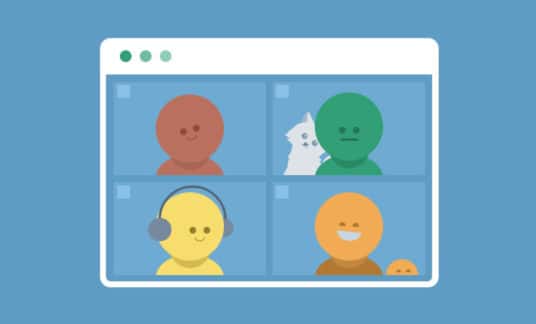Saying the customer comes first isn’t the same thing as being a customer-centric organization. However, companies that genuinely focus on clients increase sales and consumer trust while improving operations.
Transform your business by incorporating these ideas into your playbook:
What is a Client-Centric Approach?
A customer-centric approach means asking, “Does this help our client?” before every action. Additionally, all departments, from human resources (HR) to sales, know your customer’s pain points and preferences.
There are 3 key areas essential for customer-centric organizations:
- Buy-in: Executives and leaders must fully embrace the customer centricity model
- Customer journey: Companies should rethink customer journeys for the digital age
- Feedback: Information from clients should be available to as many employees as possible
Benefits of a Customer-Centric Organization
With a client-focused strategy, companies build a stronger corporate culture resulting in company-wide improvements.
McKinsey & Co. says a customer-centric mindset combined with information technology (IT) and operational changes can:
“Generate a 20% to 30% uplift in customer satisfaction, a 10% to 20% improvement in employee satisfaction and economic gains ranging from 20% to 50% of the cost base addressed in the various journeys.”
Furthermore, a customer-centric strategy is important because it increases:
- Customer loyalty
- Brand trust
- Referrals and word-of-mouth marketing
- The customer lifetime value (CLV)
- Brand awareness
- Company reputation
- Staff engagement and productivity levels
How to Become Customer-Centric
Turning into a customer-centric organization involves centering your business around a human-first approach. It isn’t enough to tell employees the customer comes first.
Instead, leaders must exude the customer-centric mindset, break down departmental barriers and practice what they preach. Use these tips and best practices to revolve your business around people, not products.
1. Define Customer-First Company Values
Before you can embed customer-centricity into your organization, define what client-centric means to your business and connect the concept to your core values and mission.
Examples of customer-focused principles include:
- Slack lists empathy and courtesy as core values
- Amazon.com’s leadership principles include, “Customer Obsession: Leaders start with the customer and work backwards”
- Zappos has 10 core values, with the first one being to “Deliver WOW Through Service”
- Chewy “believe[s] an outstanding customer experience is a differentiator that creates long-term competitive advantage”
- Starbucks’ mission is “to inspire and nurture the human spirit – one person, one cup and one neighborhood at a time”
2. Build a Customer-Centric Culture
Creating a customer-centric culture takes time and ongoing effort, but it’s worth it. Improving company culture increases employee engagement rates leading to better customer experiences.
According to Gallup, “A highly engaged organization can see 18% higher revenue per employee compared with the average.”
Culture also is affected by leadership style, work environment, expectations, and goals. To create a customer-driven culture, companies must:
- Improve internal communication and the flow of data between teams
- Develop department-specific objectives focused on customer experiences
- Turn your customer engagement strategy into part of your corporate culture
- Hold employees and leaders accountable to your values
- Recognize and reward customer-focused behavior
- Create opportunities for training to help employees gain critical customer-centric skills
- Reinforce core values using an empathetic approach to managing staff
- Design systems and workflows to place the customer at the forefront
- Generate and share customer impact stories based on interactions with employees
3. Embrace Technology
As a small business, it can feel impossible to compete with enterprises’ technology stacks. But you can prioritize tech with the highest consumer impact and only use software that plays well with existing systems.
A customer relationship management (CRM) program is a must-have. However, don’t discount the value of cloud software that enables cross-department communication.
Salesforce’s The State of the Connected Customer, which surveyed more than 15,000 consumers and business buyers,finds that although more than 75% “of customers expect consistency when interacting across multiple departments, nearly 54% feel like they’re interacting with siloed departments rather than a unified business.”
Equip your team with the tools they need for a customer-centricity model by:
- Centralizing client and team communications: Use software to put customer information, updated in real-time, at the fingertips of every team member.
- Reducing menial tasks: Invest in the right tools, such as marketing automation software, and create automated workflows.
- Using a voice over internet protocol (VoIP) phone system: A call pop feature or integration with your CRM puts insights into every employee’s hands.
- Adding artificial intelligence (AI) chatbots: AI customer service tools provide self-service options and support customers even after your business closes for the day.
4. Concentrate on Customer-Centric Marketing
Customer-centric marketing is a strategy that prioritizes client needs over everything else. It offers frictionless touchpoints, multi-channel campaigns and relevant content.
Using data insights, marketers can create content that satisfies customers while also pleasing algorithms.
Take these steps to ensure marketing teams can put clients first:
- Ask for feedback from staff on your small business marketing strategy
- Develop and frequently update customer personas to reflect behavioral changes
- Provide infographics outlining the customer journey and touchpoints
- Personalize content to specific personas in blog, social media and email content
- Create resource pages, a knowledge base or a frequently asked questions page
- Share data from customer service and sales teams
Lastly, allow time for employees to employ customer-centric advertising. Some companies respond quickly to comments on regular social media posts but fail to answer questions on social media advertisements.
If you’re not monitoring your ads, you’re leaving money on the table.
5. Deliver Excellent Experiences Every Time
Customer experience covers every human and nonhuman interaction that someone has with your brand, from reading a review to searching your website on a smartphone.
Indeed, 80% of customers say “the experience a company provides is as important as its product and service,” according to The State of the Connected Customer.
Consistent customer-centric service is impossible if you don’t track, measure and report on key insights. For instance, Google uses the HEART framework to ensure an excellent user experience (UX).
Think about the questions your metrics could answer using the HEART framework:
- Happiness: How do people feel about your service or product?
- Engagement: How often do consumers interact with your brand?
- Adoption: What percentage of people follow through after signing up?
- Retention: How many customers make a second or third purchase?
- Task success: What percentage of users complete a form or click buy?
6. Switch to Client-Focused Sales Tactics
Customer-centric selling means understanding what clients need and delivering solutions, not products. It’s about building relationships and trust while respecting people’s time and effort.
Salesforce’s 4th Edition State of Sales reports, 86% of reps say current economic conditions have increased the importance of long-term customer relationships. Moreover, 83% see an increased need to build “trust before a sale.”
Goals to increase sales or qualify leads shouldn’t come at a cost to consumers.
For instance, many companies don’t put a pricing page on their websites. To learn the cost, a lead-generation form asks for a bunch of information, including a phone number.
Sure, this data helps salespeople personalize the telephone call and quote. But did it put the prospect first from the beginning?
Unless the lead-generation form asked about the consumer’s preferred method of communication or best times to call, the prospect has no control over the process.
Forcing consumers to adapt to your method of delivering a quote isn’t customer-centric. Instead, consider:
- Using a website chatbot to give prospects a choice and a voice
- Asking people to check the box of their preferred method on the lead-generation form
- Providing a baseline price sheet in exchange for an email address and name
- Placing a testimonial on your form that raves about your affordable prices
Or you could put a pricing page on your website, along with an online tool or calculator to help consumers figure out their cost. Then use a chatbot to let people know how they can get a custom quote for possible savings.
7. Master Big Data
Data is readily available, yet it can be difficult for small companies to figure out how to extract insights. However, data informs your customer-centric strategy and improves outcomes.
According to Adobe’s 2021 Digital Trends report, “Businesses that said they had a strong foundation for real-time insights reported stronger success in the second half of 2020.”
You can use data to:
- Understand customer behavior
- Measure client engagement
- Anticipate client needs
- Proactively develop services, products, and promotions
- Segment customers for personalized experiences
- Create customer personas for each department
CRMs, productivity tools, and business intelligence software that’s integrated with existing systems help companies turn big data into actionable insights.
8. Reimagine Customer Service
Reactive customer service isn’t client-centric. Today’s teams must be proactive. Being able to anticipate problems and actively work to reduce friction before it happens is essential.
During the pandemic, many companies added a website banner addressing the current situation. Others shared resources pages and advice on topics they didn’t usually cover, such as remote working or balancing virtual schooling with work.
These companies don’t specialize in remote work. They aren’t childcare providers. Corporations offered this information because they knew their clients faced unique circumstances, and they stepped in to help.
For customer-centric service, try:
- Providing self-service tools and resources on your website
- Frequently assessing what digital channels your prospects and clients use
- Training teams to listen and practice empathy
- Empowering employees to fully support the client by giving them the right tools
Stand Out With a Customer-Centric Approach
The 2021 Digital Trends report remarks that a “text analysis of more than 800 brand purpose statements, only 40% are authentic and customer-focused.” This suggests that there’s room for small companies to differentiate themselves.
With a customer-centric culture and technology, you can align your teams around clients’ needs while gaining a 360-degree view of your customers.












